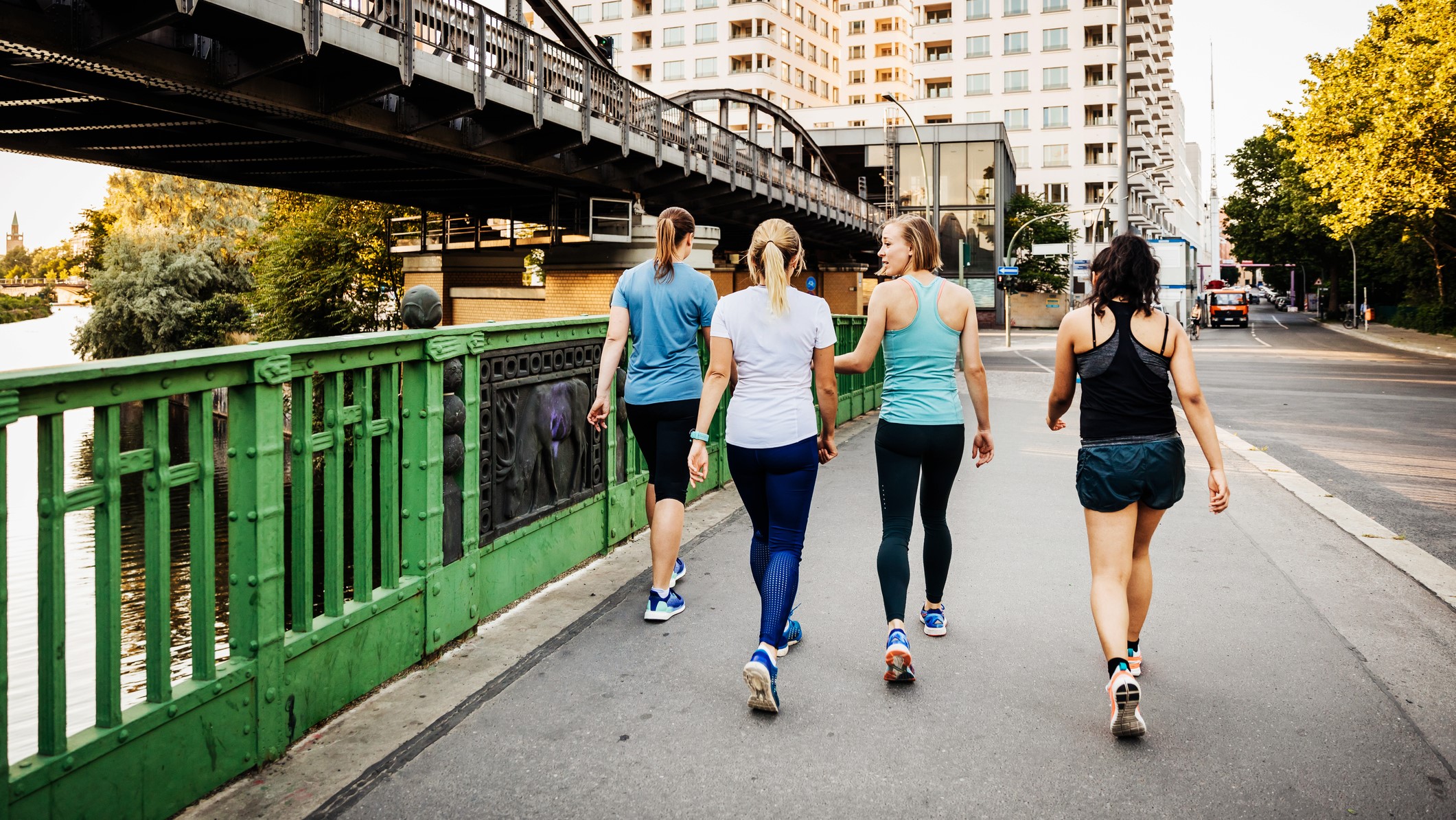How to lose weight and get in shape by walking
You can be healthier just by walking more — here's everything you need to know

Most of us don’t realize that walking is an excellent way to lose some weight and improve your overall health. Here’s what you need to know.
If you want to lose weight but are not ready to run or cycle, and have no interest in gyms, walking is ideal. All you need is a pair of sneakers, plenty of determination, and somewhere to walk. Not surprisingly, walking is one of the safest ways to lose weight.
Walking also improves your cardiovascular health, aids your immune system, boosts your mood, and can even counteract the effects of obesity-promoting genes.
As with any exercise — and walking is exercise — you need to elevate your heart rate to get the benefit. If you’re trying to lose weight, you have to achieve a calorie deficit – that is, burn more calories than you are taking in. And the number of calories you burn depends on how fast you walk and your weight: the faster you walk and the more you weigh, the more calories you burn with every session.
A deficit of around 500 calories a day is generally a good target; that way you can lose about one pound a week. Of course, as you lose weight, you will burn fewer calories with each walk, unless you up your speed.
How much do you need to walk to lose weight?
Most adults should be getting 150 minutes of moderate-intensity aerobic activity each week. This can mean five brisk 30-minute walks each week, but if this is not possible, break them up into longer and shorter walks.
Another option is to aim to walk 10,000 steps a day. According to the American Council on Exercise, the average person who hits that daily number will burn up to 3,500 calories per week. It is worth noting that the target of 10,000 steps (it seems a little neat, right?) began as a piece of marketing in 1965 by a Japanese company that was about to introduce a device called a Manpo-kei (it means 10,000-steps meter). However, it is a useful goal — a review of 32 studies, published in the International Journal of Behavioral Nutrition and Physical Activity found that “10,000 steps/day is a reasonable target for healthy adults.”
Get instant access to breaking news, the hottest reviews, great deals and helpful tips.
How to get started when walking for weight loss
As with any fitness program, the first steps are the hardest, so make sure you fit in your walking when it best suits you. Some people like to go out first thing in the morning. If so, place your shoes in full view, so you see them as soon as you wake up. You’d be surprised how effective this is. If you have returned to office work and lunchtime is best for you, add your walk to your schedule, so it becomes part of your day. If you want to walk in the evening, make it your wind-down/personal time.
You need to be comfortable, so a good pair of sneakers or walking shoes is a must. Take a look at our best running shoes, which will be built to support your foot as you move. Dress for the weather and take into account your route (if you’re tackling hills, you’re going to heat up, so you may want to remove a layer). If you’re out very early or after the sun has gone down, wear reflective clothing. Wherever you go, be safe.
One great way to ensure you make the time for your walk is to get a friend to go with you. The company will make the time go quicker and you can encourage each other when enthusiasm is low.
If you have a dog, you have an added incentive to take regular walks, as your canine pal also needs exercise to stay healthy and happy.
Technology can be your best friend when you’re walking to lose weight. You can listen to music — research has shown music with a fast tempo can help make exercise feel easier — a podcast, or an audiobook to help pass the time, though many people enjoy the respite from the noise of daily life. You could also download a step counter app to your smartphone to measure your progress or invest in one of the best fitness trackers, best Garmin watches, or best Fitbits.
As your fitness improves, go longer, add some wrist or ankle weights, or just increase the tempo.
Try to vary the surfaces you walk on, to work a greater range of muscles and keep things interesting.
Walk in nature when you can. Research has shown this is more beneficial than exercising on a treadmill. It also lowers your levels of the stress hormone cortisol; raised levels of cortisol leads to an increased appetite, and fatty, sugary foods are often the first choice. Walking in nature is also good for your mental health.
If you are going to be out for more than 60 minutes, eat something light an hour beforehand. Otherwise you don’t need to eat anything, but bring a (healthy) snack if you think it will help (we've rounded up some of the best healthy snacks for weight loss here). Drink water to stay hydrated and steer clear of sugary sports drinks: They may contain more calories than you are burning.

How to walk with good form
If you’re walking to lose weight, you have to think about your form. Stand tall and keep your head up — it weighs about nine pounds, so if you slouch or let it hang down, you’re putting stress on your back and neck muscles. And you might walk into something!
Try to engage your core by tightening the muscles as you move. Your core aids balance and stability as you walk, and it helps you to maintain good posture. If you're looking to work on your core strength, we've found the best ab workouts here, as well as this exercise, which is as good as a plank when it comes to blasting your core.
Don’t overstride, as you’ll literally be overextending yourself, adding to the stress on your legs and lower back. Keep your steps under your body to maximize power with each push-off, rather than forcing your body to catch up with your legs.
Pump those arms to burn more calories and encourage speed, but don’t swing them across your body, as this places stress on your lower back by forcing your torso and spine to repeatedly twist. A driving, back-and-forth motion is what you should aim for, but there is no need to swing your arms as high as your chest.
When you are ready to tackle hills, lean forward slightly and take short steps on the incline. And don’t be fooled by downhills: they place less stress on your lungs and heart but considerably more on your muscles and joints. Again, take short steps and keep your knees bent. Land lightly.
And finally…
Remember, not all of your walking has to be organized: walk to and from the store, get off the bus one stop further away from your destination, take the stairs rather than the elevator — there are many easy ways to add some walking to your daily activities.
Next: I walked 50 miles in the Skechers Go Walk shoes and here's how they fared. And read about how I used this app for two weeks and made money just by walking my dog.
John is a writer and editor based in London. He was worked for magazines such as Runner’s World, Men’s Health, Women’s Health and Cosmopolitan. A keen runner, what he lacks in ability he makes up for with enthusiasm and excuses.

